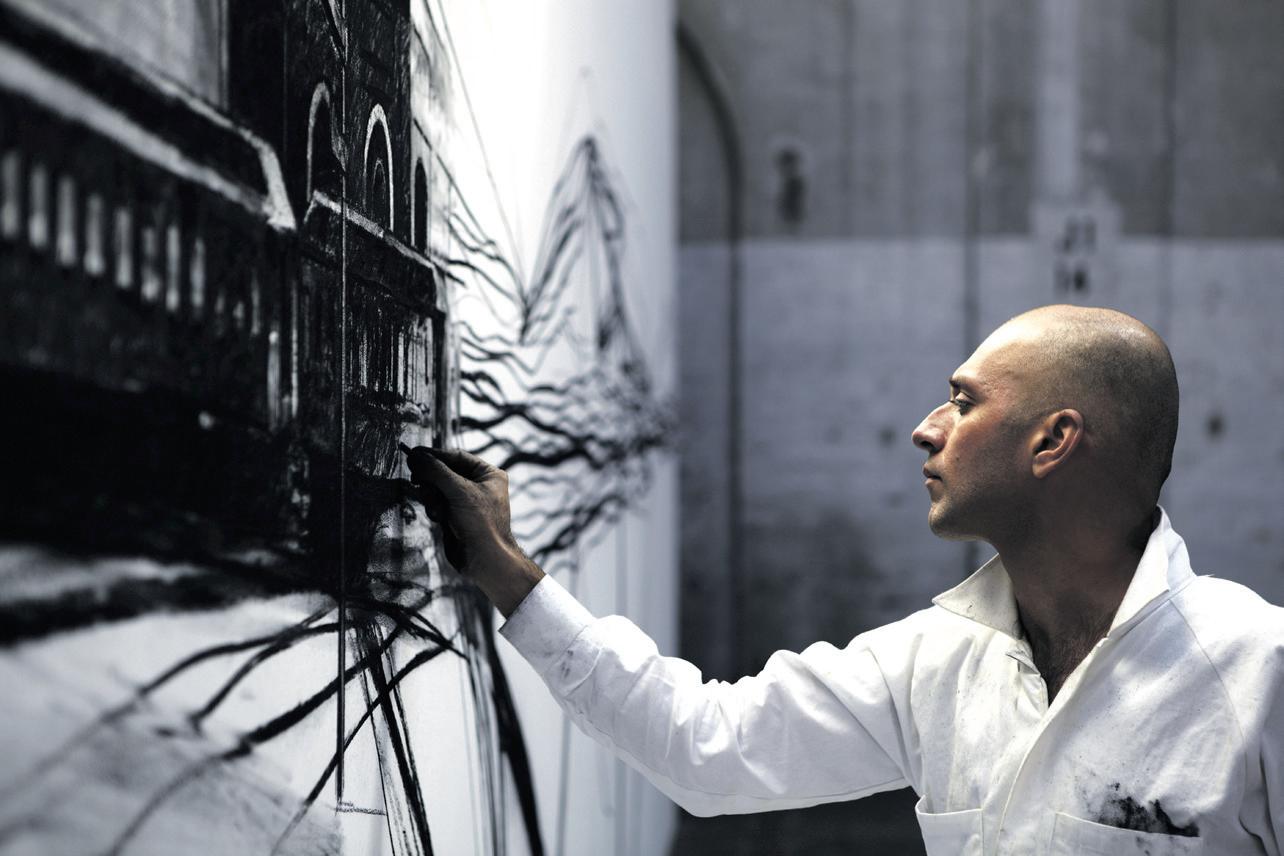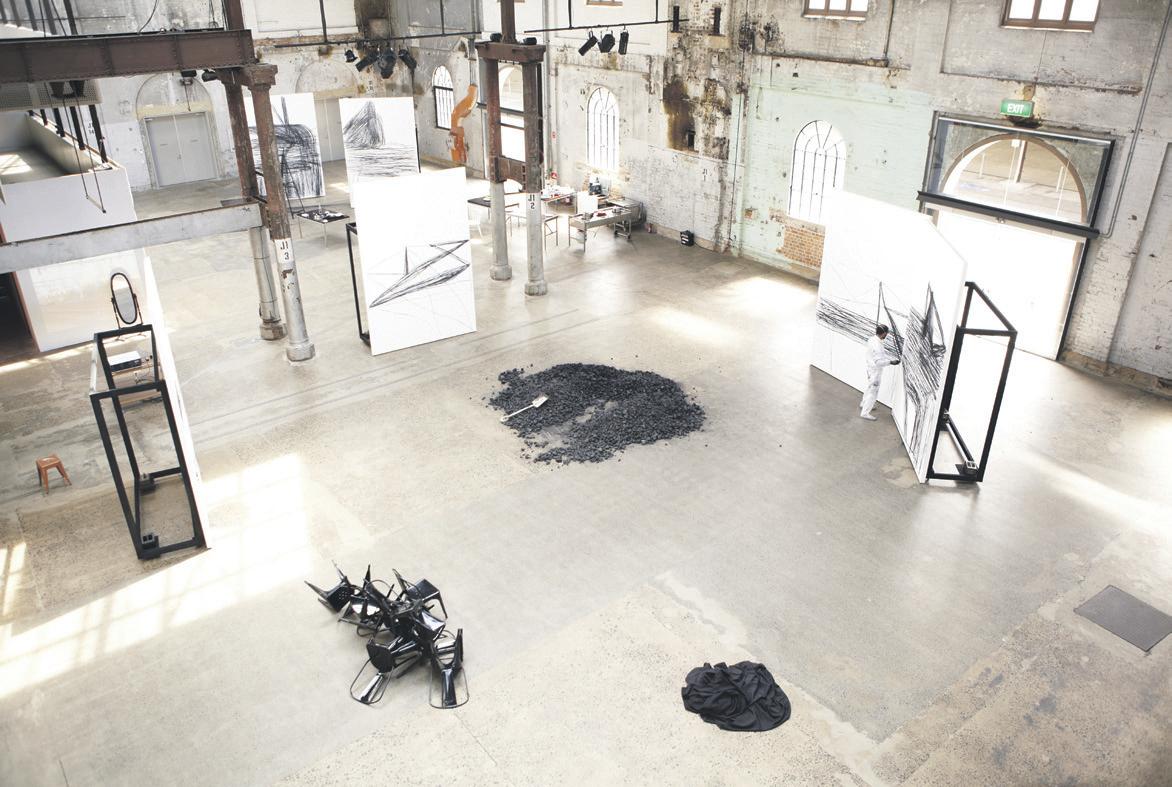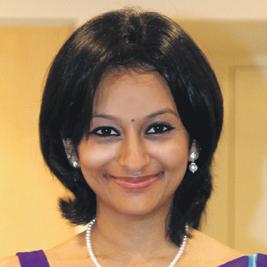
4 minute read
Transgressing boundaries with Performance Art
from 2012-10 Sydney (2)
by Indian Link
Experience a transformation through a live visual art form with profound meaning

BY SALONI KOBER
World-renowned Indian artist Nikhil Chopra is a master of many art forms – painting, photography, theatre, sculpture and performance art. Born in Kolkata in 1974, this multi-faceted artist recently travelled to Sydney to display and create his latest Performance Art piece titled Blackening IV: Bay 19 at the Carriageworks public space in Redfern. During his three-day performance (September 28-30), Chopra adopted several different personae whilst creating an elaborate installation of large-scale drawings. These charcoal drawings were made directly onto 3-metre high, moveable walls. Chopra used these drawings to help create a site from which he could interact with the audience throughout the performance.
Blackening IV: Bay 19 is Chopra’s fourth installment in his series of ‘Blackening’ performances all over the world. The term ‘Blackening’ literally refers to the physical act of drawing with charcoal, while at the same time trying to raise the question about colour and ethnicity. ‘Bay 19’ refers to the physical space at Carriageworks, which used to be an old railway workshop from the 19th century and now produces and presents contemporary art by local and international artists.
Performance Art is a timebased action, carried out by an artist that has a beginning and an end. The documentation of the performance through photographs, or in Chopra’s case his drawings, may live on. But the performance itself is short-lived. The action is the art, not the output of the performance. The performer tries to create a lasting impression on the minds of his audience, while trying to get across his ideas and feelings. Chopra’s performance piece was stimulated by the history and architecture of both
Carriageworks and Sydney. The use of charcoal as a tool and the aim to cover his space with black dust was performed with the intent of casting a light on the question of “Am I black?” and “Can one really be defined by a colour?”

With each piece, be it an indoor or an outdoor one, Chopra transforms the physical space with his performance and his drawings. There is a subsequent internal transformation that takes place in Chopra, a heightening of senses. Furthermore there is a transformation in the audience, who are watching and reacting to what they are seeing.
In his Sydney performance, Chopra addressed issues of identity and history, the role of autobiography and the process of transformation. Through Blackening
IV: Bay 19, Chopra transformed the space at Carriageworks with bold and confident strokes in his charcoal drawings. This “blackening” eventually moved onto his own costume and body.
On the second and third day of his performance, Chopra shopped at the Eveleigh Markets for local produce. He used these fruits and vegetables along with some traditional Indian spices, to create an elaborate dinner for 18 people.
Nikhil Chopra’s works have been shown at major museums and art festivals all over the world, including the New Museum of Contemporary Art, New York; the Museum of Contemporary Art, Chicago; the Artsonje Centre, Seoul, and the 53rd Venice Biennale.
Chopra admits that Performance Art is something he stumbled on to. What started as a Fine Arts Degree at Ohio State University in 2003, slowly developed into Performance Art due to Chopra’s love of both art and theatre.
“I performed my first Performance Art piece as my master’s thesis, which was met with much appreciation from colleagues and teachers,” he told Indian Link “From then on, each performance only created exhilaration and an urgency to perform again”.
“Each piece provides a chance to rectify the mistakes of my last performance, while at the same time offering freedom to experiment and make new mistakes,” he added, tongue in cheek.
Performance Art has many challenges. For one, each performance brings forth a confrontation with new space, new circumstances and a new audience.
For Chopra however, coming through the other side and finishing a performance, be it a 24-hour, 48hour or 99-hour performance, is the reward.
“Each performance puts forward a new kind of test,” Chopra revealed. With Blackening IV, he seemed to have enjoyed cooking for the onlookers.
“My performances are rarely scripted; instead I go into each performance with a map in my mind. The origin and the destination of my journey are fixed, yet the journey itself is improvised,” he explained.
In his 2003 performance Sir Raja II, Chopra chose India’s erstwhile ruling classes to focus on past and present issues of colonialism, exoticism and excess: he did this by transforming himself into a 19th century raja, and seating himself motionless at a table with a lavish spread of food and flowers, at the end of an extra-long red carpet.
‘Sir Raja’ has become one of Chopra’s statement alter-egos, just as Yog Raj Chitrakar, who apparently, is based on Nikhil’s own grandfather Yog Raj Chopra, a Kashmir-based painter of the 1950s and ‘60s.
Today, the Yog Raj Chitrakar: Memory Drawing series and the
Sir Raja series have travelled through Mumbai, Chicago, New York, Manchester, Brussels, Oslo, London, Tokyo, Venice, New Delhi, Srinagar and Ohio.
Performance Art first made its appearance in India in 1970 with artists such as Bhupen Khakhar, Vivan Sundaram and Nasreen Mohamedi. The art form in India has been unable to generate as much popularity as other art forms have. It has definitely created a lot of curiosity and enthusiasm; however, there seems to be an infinite lack of venues and institutional support for the exponents and exhibition of Performance Art. Khoj International Artists’ Association was launched in New Delhi in 1997 to combat this problem by promoting experimental art practices in India. As a pioneer of Performance Art in India, Khoj runs many Performance Arts programs by upcoming Indian and international artists. However even despite this, there are only a handful of artists who are seriously practicing Performance Art. The monumental exposure and appreciation of Indian contemporary artists like Nikhil Chopra outside of India has helped put the country in the spotlight.
“I believe that the long held image of a poor helpless khaki clad artist with a jhola and jodhpuris is changing,” Chopra stated. “The Indian artist of today feels empowered and wants to take risks. Performance Art is the next chapter in the book of contemporary Indian art”.
Chopra himself conducts workshops and courses for the artform.

“I firmly believe that as long as an artist can use his tools to create a heightened sense of selfawareness, it doesn’t matter what sort of art form it is,” Chopra said.
Chopra will continue his work in Australia with his performance at Asialink in Melbourne upto October 18 and at Fremantle Arts Centre, Fremantle from the October 18-31.








